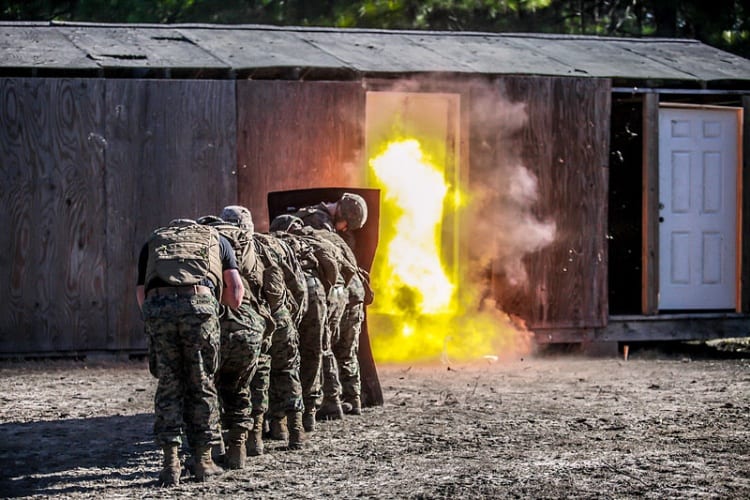
Known as BLAST (Blast Load Assessment Sense and Test), the three-part system features separate components for measuring blast pressure, establishing injury thresholds for the brain, and analysing potential TBI symptoms.
Coin-sized sensors that can survive an explosion are attached to armour or helmets, providing data on blast pressure. A handheld or airport-style walkthrough scanner is then used to read the data from the sensors and use an algorithm to convert it into “go or no-go” threshold judgments. If a soldier must be removed from combat, he or she then undergoes a TBI-focused medical exam using a neurofunctional assessment tool.
“A system like BLAST is vitally important because it can help recognise the signs of TBI early and tell warfighters they might need medical attention,” said Dr Timothy Bentley, a program manager overseeing the research for ONR’s Warfighter Performance Department.
“This reduces the likelihood of someone enduring multiple blasts and suffering more serious brain injury. BLAST also is unique for its unique suite of technology.”
The neurofunctional assessment tool and algorithm are being developed by engineering and research firm ARA. According to ONR, the tool is about the size of a computer mouse and fits in the palm of the hand. It emits vibrations in a variety of patterns to stimulate fingertip sensations and assess brain health. By testing whether or not combatants feel these vibrations, medics can decide if someone exhibits TBI symptoms and needs to be withdrawn from duty.
“Together, the components of BLAST can enable us to designate a pressure threshold number for when someone is at risk for TBI and needs to stand down for more advanced testing or medical care,” said Dr Laila Zai, a scientist with ARA. “Think of a speedometer. Whether you’re going too fast or slow depends on road conditions, and is indicated by the speed limit. BLAST determines a safe ‘speed’ for the brain.”
The development of a neurofunctional assessment tool could also have potential implications for assessing TBI in sports such as rugby and American football. Concussions in both sports are a major concern, and the ability to sense and assess TBIs could aid pitch-side medical staff and enhance player safety.




Red Bull makes hydrogen fuel cell play with AVL
Formula 1 is an anachronistic anomaly where its only cutting edge is in engine development. The rules prohibit any real innovation and there would be...